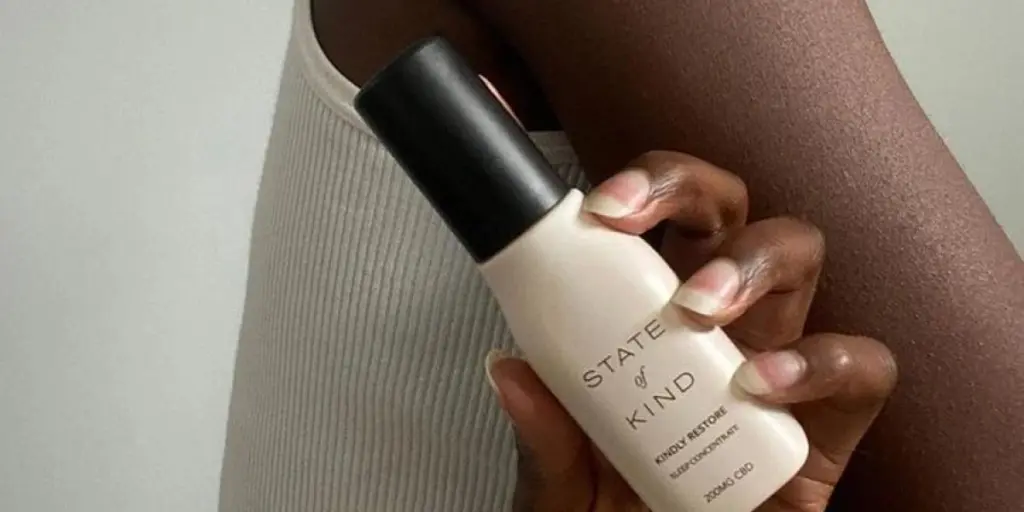The tide is turning away from all-natural beauty products. In 2024, synthetic formulations will become a must-have for online retailers. Why? As technology advances, synthetic ingredients often perform better with fewer irritants. We’ll explore the consumer demand fueling the trend and how retailers can capitalize on rising synthetic beauty.
Table of Contents:
1. Consumers want results, not just natural labels
2. Advanced science delivers effective formulas
3. Sustainability starts with smart packaging
4. How online retailers can ride the next wave
1. Consumers want results, not just natural labels

Natural and organic labels just don’t carry the cachet they once did in the beauty world. Today’s consumers have matured, seeking products that actually work instead of just featuring buzzwords. They understand that “natural” doesn’t automatically mean safer or more environmentally sound. This growing demand for demonstrable results over natural claims is fueling a surge of interest in synthetically formulated cosmetics and skincare.
Lab-made ingredients offer something that fickle Mother Nature simply can’t: consistency. Synthesized Beauty has pinpointed the active compounds behind extracts like Vitamin C and retinol, allowing them to formulate these precisely each time. The upshot? Products deliver reliably high-performing results. Clinical-style testing also provides proof customers now demand image-centric natural branding.
As the realities behind natural products tarnish the halo effect, expect to see synthetic formulations take over shoppers’ carts. The more brands can scientifically demonstrate a product’s benefits, the more consumers will glow over effectively enhanced beauty instead of arbitrarily natural claims. We’ve moved into an era where man-made means making visible improvements.
2. Advanced science delivers effective formulas

Beyond offering consistency, synthetics also allow for better-targeted solutions. Scientists can craft ingredients addressing specific issues in ways no natural extract ever could.
Take customized peptides for example. These short protein chains provide a hydration punch strengthening skin moisture barriers, and combatting environmental stressors. Synthesized peptide complexes outperform the most luxurious moisturizing creams from big-name natural brands. Brands like OliOla use biotechnology to engineer moisture-binding peptides for boosting hydration up to 70% within four weeks.
Or consider next-gen retinoids playing whack-a-mole with wrinkles. Natural retinol alternatives often irritate and degrade when exposed to air and sunlight. Enter synthetic retinoids – stabilized, slowly-released versions that sidestep irritation while smoothly diffusing into the skin over 8 hours. Early lab trials show these sophisticated retinoids erase wrinkles up to 45% better than leading over-the-counter treatments.
Expect biotech and green chemistry to unlock more targeted synthetic actives for easily-adopted beauty upgrades. Science is helping consumers get noticeable aesthetic upgrades – not just fuzzy feel-good marketing. As technology unlocks ingredient innovations, synthetics will eclipse natural.
3. Sustainability starts with smart packaging

Of course, the sustainability of these lab-made formulations remains top of mind. Consumers want demonstrably greener solutions. Thankfully, synthetic ingredients often support cleaner supply chains and conservation efforts.
Take squalane for example. This moisturizing wonder has traditionally come from shark liver oil. However, biotech breakthroughs allow for brewing pure olive-derived squalane from start to finish in industrial fermentation vats. No sharks were harmed! Bio-based synthesization makes renewable ingredients scalable without ravaging fragile ecosystems.
Streamlined production also enables better recycling initiatives further reducing waste. Single-source ingredients skip energy-intensive harvesting, extraction, and transportation involved with far-flung natural supplies. Shorter value chains preserve more resources while upholding green standards.
Brands keen on sustainability credentials are rethinking packaging too. Bulbous bottles overflowing with air take up precious cargo space and pile upon our environmental shame. Smart brands optimize packaging maintaining efficacy without overdoing on appearances. For example, TrueMission’s chic concentrated serum pods reduce packaging by up to 97% for bringing active ingredients home sans waste. Adaptive cartons then return the recyclable empties back to TrueMission closing the loop.
As consumers scrutinize entire product lifecycles, synthetic ingredients, and innovative delivery formats show greener routes to beauty. Once deemed clinical and cold, synthetics now bloom as thoughtfully crafted sustainable options. Naturalness becomes secondary to doing less harm.
4. How online retailers can ride the next wave

Forward-looking online retailers have an opportunity to capture rising consumer demand for demonstrably effective and sustainable synthetic beauty. As natural formulations decline in desirability, proactive product selection and messaging will be key.
Carefully evaluate new brands prioritizing lab-made ingredients with proven clinical results. Seek out novel textures and clinically tested claims backing visible beautifying effects – not just subjective sensory feels. Partner with emerging biotech developers crafting green chemistries targeting specific skin needs from acne to hyperpigmentation.
Conduct trials to document the performance of these synthetic solutions on actual customers. Release video testimonials or before and after imagery putting results on display. Quantify improvements around wrinkle reduction, brightness, firmness, or hydration compared to previous natural options.
Adapt branding and packaging to call out synthetic ingredients and process benefits. Add sustainability seals affirming production ethics and green commitments. Feature labels like “bio-based” and “ocean-friendly” guide consumers to greener choices.
Most importantly, update your value proposition around what matters now – better beauty through better science and ethics. With the right curation and messaging, online retailers can ride the coming wave of synthetic formulations for more beautiful and sustainable profits. Reap the rewards as ingredients grown in labs harvest consumer delight in 2024.
Conclusion
Consumer priorities are drifting away from vague natural claims and toward proven results and sustainability. Synthetic beauty formulations offer the next wave of opportunity for online retailers catering to these changing preferences. By delivering the enhancements and ethics consumers now demand, synthetic cement status as the must-have ingredient for 2024. To ride the rising synthetic wave, retailers should start adapting their product mixes and messaging and seeking out brands focused on biotech and highly effective synthetics over natural extracts. Ride the wave of synthetic skincare all the way to more beautiful profits. The next era of efficacy is now.




